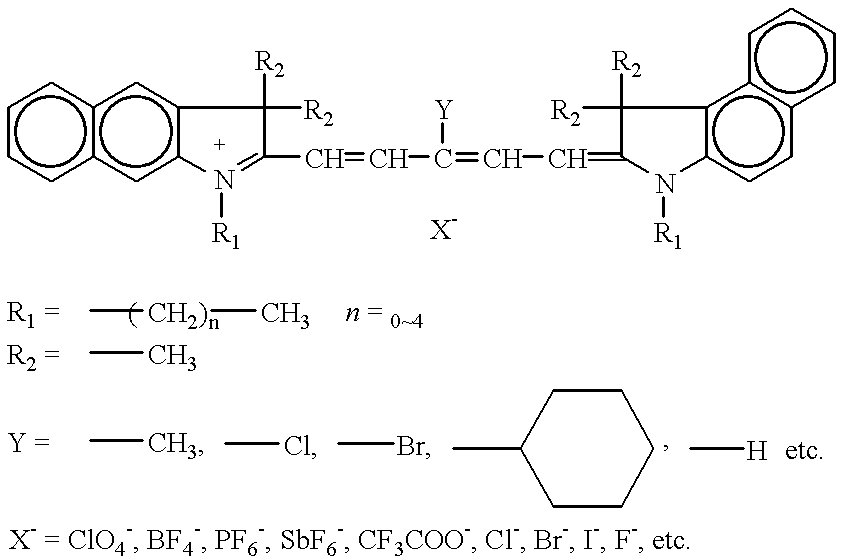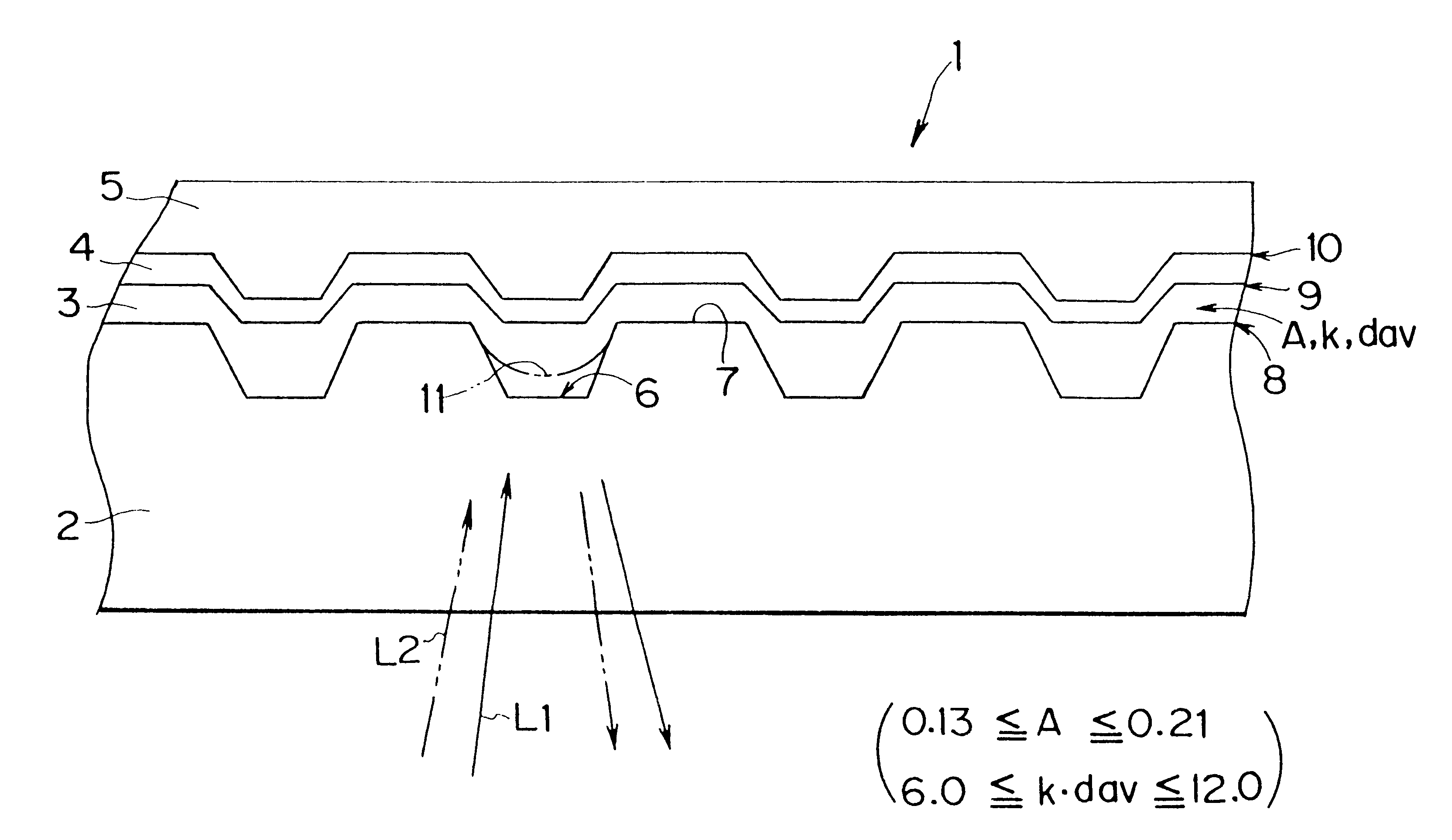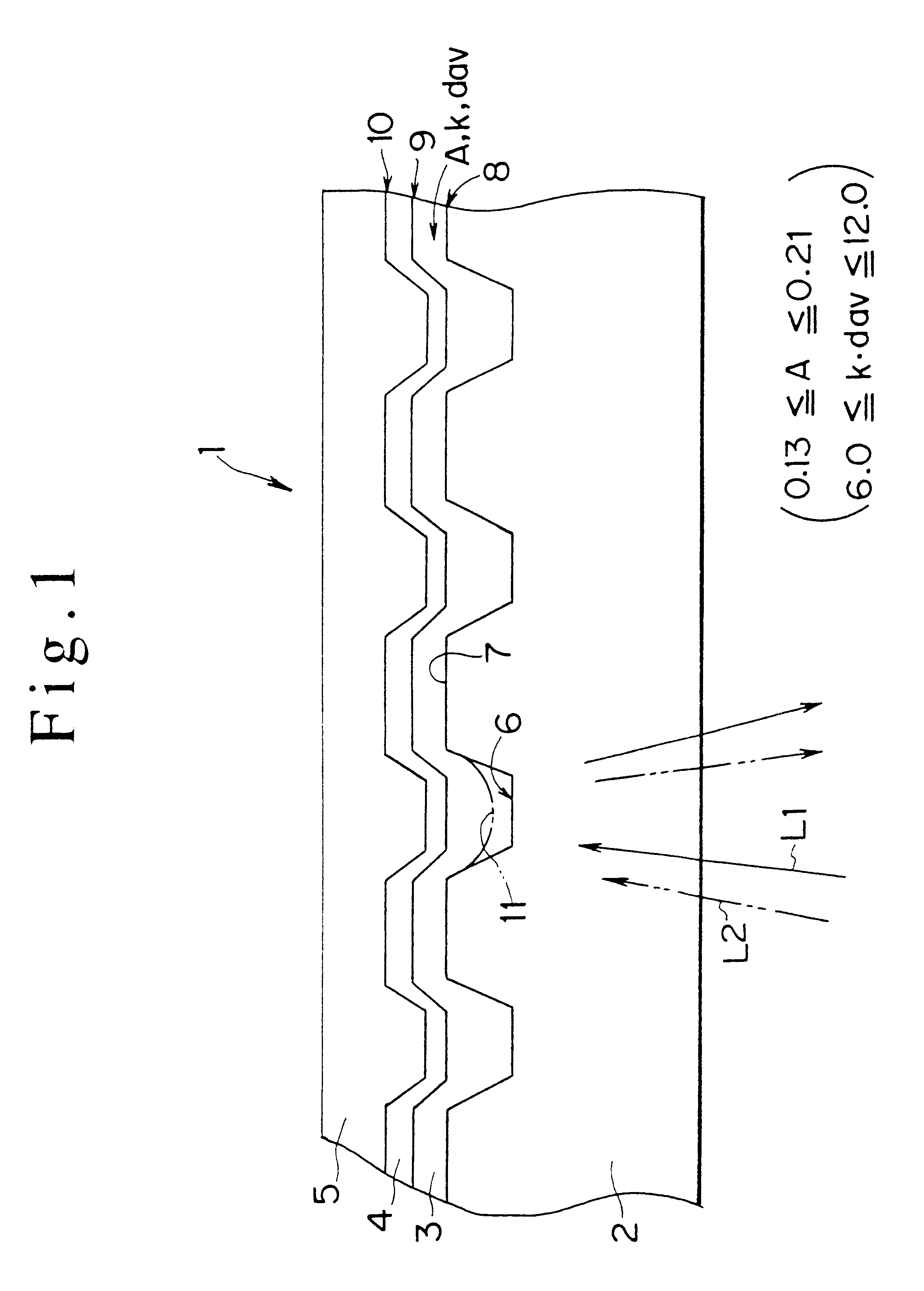Optical information recording medium
a technology of optical information and recording medium, which is applied in the field of optical information recording medium, can solve the problems of inability to record enough, drop in recording sensitivity, and thermal heterogeneity generated during high-speed recording
- Summary
- Abstract
- Description
- Claims
- Application Information
AI Technical Summary
Benefits of technology
Problems solved by technology
Method used
Image
Examples
Embodiment Construction
The dye (No. NK-3251) used in the third embodiment was dissolved in diacetone alcohol at 20 grams / liter. This was applied on the substrate attained with the same method as in the first embodiment and a dye film layer (light absorbing layer 3) with film thickness dav of 45 nm was formed.
At this time, the absorbency A of this film was 0.13 (Abs) at a wavelength of 780 nm.
Also, the optical constant of this film, the imaginary number portion k (of the complex index of refraction cf the film), is k=0.13, consequently k.dav=5.9.
As in the first embodiment, a light reflecting layer 4, comprising gold (Au), by RF sputtering, and a protective layer 5 of ultraviolet-curable resin were formed on the substrate 2 having this dye film applied thereon.
The reflectivity at wavelength 780 nm of the optical information recording medium 1 attained in this manner was Rg=74.3%R. When recorded at linear velocity 1.2 m / s with a recording apparatus (Pulse-tech, DDU-1000) using 780 nm wavelength, the modulati...
PUM
| Property | Measurement | Unit |
|---|---|---|
| thickness | aaaaa | aaaaa |
| reflectivity | aaaaa | aaaaa |
| wavelengths | aaaaa | aaaaa |
Abstract
Description
Claims
Application Information
 Login to View More
Login to View More - R&D
- Intellectual Property
- Life Sciences
- Materials
- Tech Scout
- Unparalleled Data Quality
- Higher Quality Content
- 60% Fewer Hallucinations
Browse by: Latest US Patents, China's latest patents, Technical Efficacy Thesaurus, Application Domain, Technology Topic, Popular Technical Reports.
© 2025 PatSnap. All rights reserved.Legal|Privacy policy|Modern Slavery Act Transparency Statement|Sitemap|About US| Contact US: help@patsnap.com



